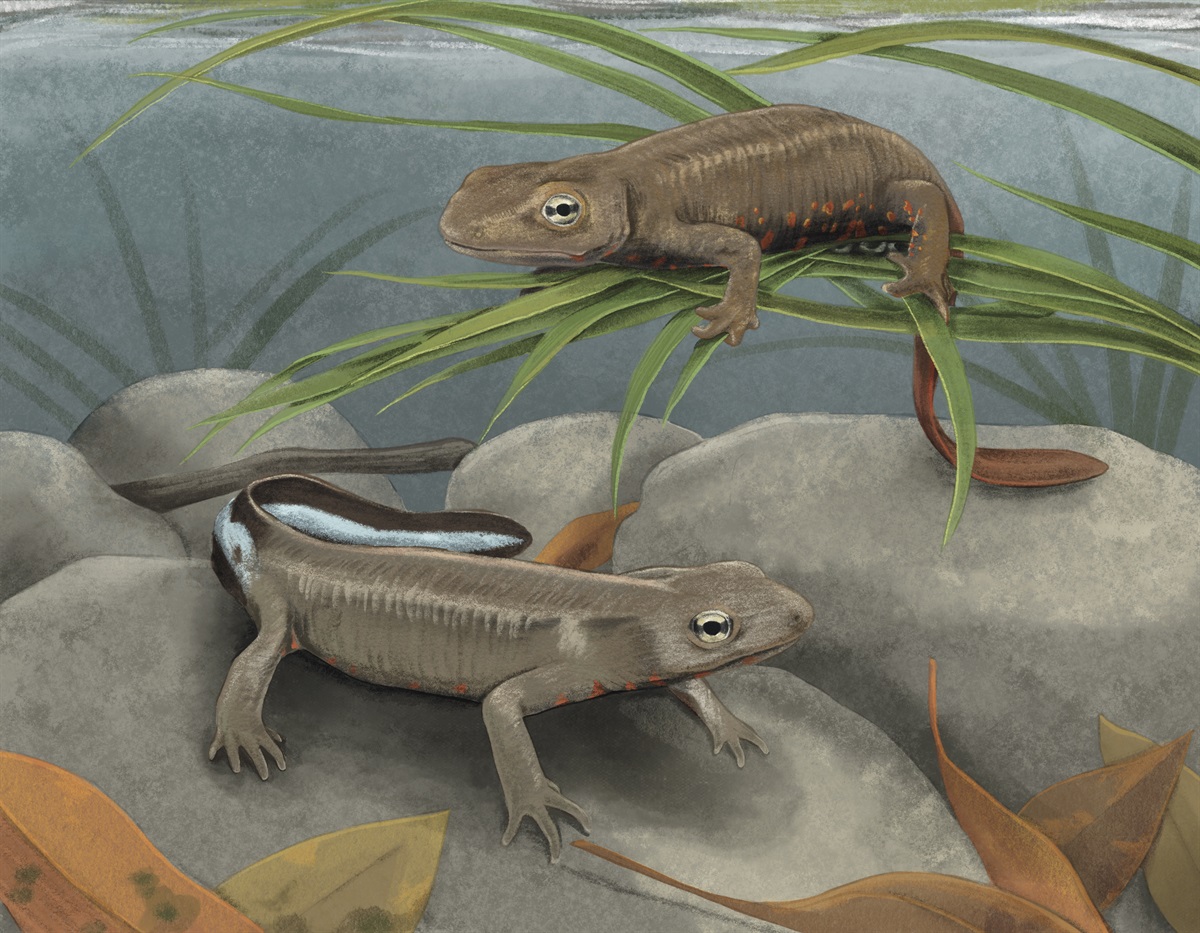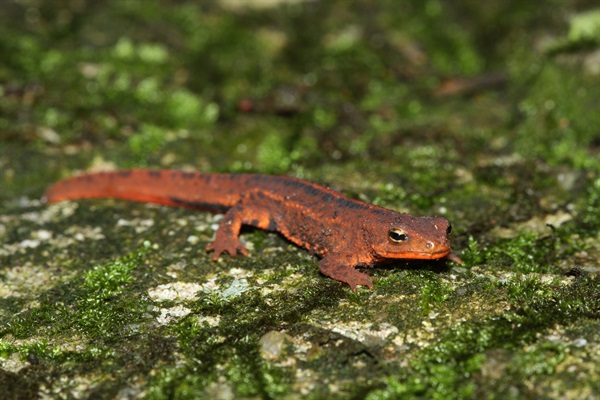With its elongated body and long tail, many would often confuse Hong Kong Newt with lizards or geckos. However, it does not have scales, which is a determining characteristic of reptiles. In fact, this species is an amphibian and the only Caudata (i.e. amphibian that has a tail) in Hong Kong. When Hong Kong Newt was first discovered, biologists thought that it was endemic to the territory, and hence named it after Hong Kong in 1962. Subsequently, it was also found in other areas of Guangdong.

Most amphibians rely on freshwater resources in their early stages of life. Hong Kong Newt is no exception. It inhabits freshwater streams and surrounding woodlands of Hong Kong. Its prominent ridges and greyish-brown body allow it to flawlessly mimic a fallen leaf and blend in perfectly with the stream and forest backgrounds. The orange marking on its ventral sides sends a warning signal to the predators, telling them that it could be distasteful or even lethal to them. Interestingly, this body pattern is unique for each individual and work as a 'fingerprint' which permits scientists to identify individual newts.
During the breeding season from September to March, the newts migrate from forest floor to stream pools to look for suitable mating partners. When the peak mating period arrives, it is possible to find over a hundred newts gathering in one single pool. The breeding males will have a bluish-white stripe on their tails, which coupled with a smaller body size, making them easily distinguishable from females from above water. During courtship, the males will fan their tails and secrete pheromones to attract females. However, it is not so easy for a male to stand out from the many suitors as competition is fierce. After mating, the females will look for suitable locations, such as submerged plant roots or the leaves of Grass-leaved Sweet Flag, to lay their fertilised eggs.
The adorable newborns have external gills and are ornamented with black markings on their eyes. The gills will be replaced by lungs upon metamorphosis, the time when they leave the water and shift to live in the terrestrial environments as juveniles. After that, they will continue their growth on land until mature enough to breed in streams.
| Family | Salamandridae |
|---|---|
| Scientific Name | Paramesotriton hongkongensis |
| Adult Size | 14–15 cm in length |
| Habitat | Streams and woodlands |
| IUCN Red List Status | Near Threatened |
